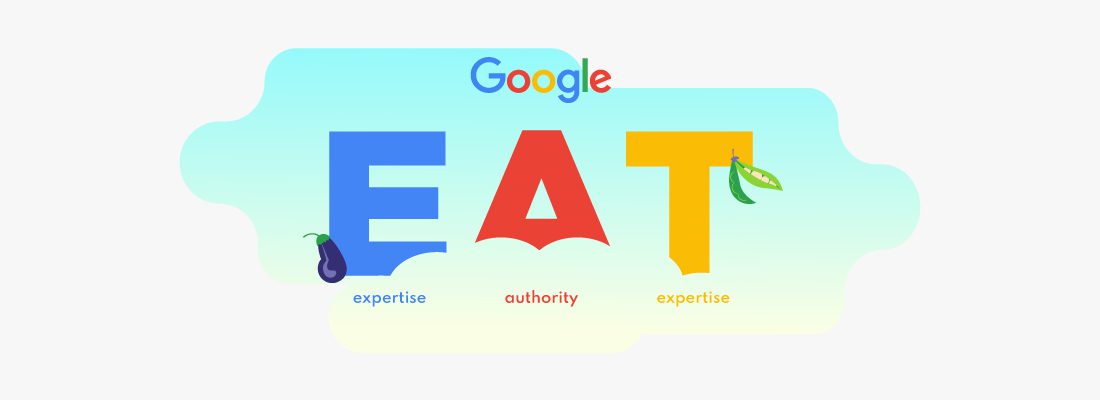Disclosure: This post has affiliate links. I earn a commission at no extra cost to you. I only recommend products I personally believe in. More info on my Privacy Policy page.
Google’s Helpful Content Update – In Real Terms!
Table of Contents
Another month rolls by, and Google unveils further updates to its search algorithms. As confusing as they may sometimes seem, content updates are crucial for keeping search useful for all! Google’s Helpful Content update, however, has set a few tongues wagging – though it’s really simple to get to grips with.
Below, we’ll show you everything you need to know about the HC update and how it’ll affect you and your web traffic moving forwards.

What is Google’s Helpful Content update?
Google’s latest update is about ensuring people find useful information more easily. This change aims to promote web content that offers original advice that genuinely supports readers.
Search Intent
It’s the latest in Google’s long line of organic search boosters in recent years. Following the mobile-first boom (where Google focused on targeting practical search), the Big G has turned its attention back to content quality and searcher intent.
Search intent is the purpose behind the search, what is the end goal? Some common types of Search Intent are:
Navigational
This search would be carried out if a person already knows which website they want to visit, and wish to go directly there. Examples of terms could include ‘Facebook’, ‘ASOS’, ‘SEO CoPilot’.
Informational
As the name suggests, informational intent means the user is searching for a specific piece of information – whether that be looking at the weather forecast, searching for showtimes at their local theatre, or trying to find information about SEO, all of these examples display informational intent. These searches are often in the form of a question, but may be shortened to get similar answers in results.
Commercial
These are searches with the intent of making a purchase in the near future, where research is being done prior to making a decision. Examples could include ‘what is the best dishwasher brand?’, or ‘SEO companies in Chesterfield’. People making these types of searches are often looking for comparisons and reviews, to help them making a purchasing decision.
Transactional
Transactional intent means the searcher is ready to make a purchase, and is looking where to buy from. Examples of searches could include ‘buy iphone 14’, ‘best price for airpods pro’.
Your Website Visitors Must feel Satisfied
This means, by Google’s own words, that visitors can expect to feel more ‘satisfied’ by the content they find through everyday search.
For some website owners, this shift in gears has caused some anxiety. Should you throw out the entire SEO rulebook to make space for the HC update? What happens to existing content?
Luckily, there’s very little to worry about. Many of the same, proven SEO tactics and techniques still work as you’d expect them to. Only now, there’s more of a focus on writing for people, not just ticking SEO boxes for the sake of it.

What should you do to get seen after the Helpful Content update?
The quickest answer is, of course, to improve your content in line with Google’s expectations. We’ll dig into this shortly.
When was the Update Released?
The Helpful Content update launched in September 2022, and from that point on, you may see some of your visitor stats drop a little. Providing you’re focused on your content game, this should only be temporary – don’t panic! It’s more aimed at websites churning out irrelevant and poorly written content that does not satisfy the searchers question.
Audit and improve your content
To ride the waves of the Helpful Content update, you should ideally audit your current content and improve it, making sure it covers the topic in more detail and is not just repeating what others have already written about. Does your content directly answer visitors’ questions? What do you do to establish yourself as an authority in your field?
How to Audit your content by Ahrefs
The best way to ensure your content’s likely to boost your rankings post-HC update is to follow E-A-T principles. These rules don’t follow an exact science, but they offer a brilliant template that gives us a clear idea of what the Big G means by ‘helpful content’.
What is E-A-T?
E-A-T stands for Expertise, Authority and Trustworthiness. It’s a formula that Google has flip-flopped on a little when it comes to ranking factor status, but it’s certainly hugely important as an SEO influencer.
This three-part model acts as a checklist of sorts for your content. The aim is, crucially, to assure your visitors that your advice is truthful and comes from a seasoned authority. Otherwise, you could be just about anybody sharing advice online – Google wants you to prove yourself!
What does Google mean by ‘expertise’?
Expertise is knowledge. But, when delivering knowledge through online content, you must show you understand your audience’s needs and intent. A good teacher, after all, not only holds knowledge, but also helps people gain the same skills and appreciation.
Be the Teacher
So, it’s your turn to become a teacher! To show your expertise in a useful way, you need to explain topics and answer questions clearly. Answer queries that people are generally posing Google through search, and try to establish their intent for clicking on you in the first place.
Visitor Journey
Run through your visitor journey in your head. You’ve answered one question, but what comes next? It’s good practice to think of add-on queries and points readers will likely raise.
Keep it simple
Reader intent is important for keeping people on-page and keeping things simple. Consider the experience and reading levels of your audience. Are you really going to connect with people if you fill your posts full of jargon?
The aim with the ‘E’ in ‘E-A-T’ is to help readers understand the topics you write about. Simple!

What does ‘authority’ mean in E-A-T?
Establishing authority online can take time, and it’s here where white hat SEO techniques can really come in handy. Showing the world you’re an authority at what you do is paramount to good content.
Relevant Backlinks
You may not be a big fish in your industry yet, but you can show your research and your own intent. The first step to establishing authority in web content is being linked to by other authority websites.
Of course, it’s good to avoid competing websites and brands here! However, providing your outbound links are relevant and provide genuine value to readers clicking out, it’s a fantastic first step.
Social Proof
The authority portion of E-A-T also revolves around internal linking and social shares. You should ideally insert a few relevant links within your content to other guides and pages on your website so readers can learn more. This technique also helps Google understand the breadth of your authority.
Establishing yourself as an authority
Establishing authority does require some off-page SEO work. By this, we mean you should ensure you have active social profiles and a Google My Business listing (or Google Profile as its now known) to support local search. Social proof is also vital in building trust (again, more on this below).
Make Relevant Connections
Google – and your readers – want to see that you’re a leading name in what you have to talk about. While this may take time if you’re just getting started online, linking out and networking for relevant connections – such as through guest blogging or interviews – can provide a shortcut or two.
How do I make my website content more trustworthy?
Making your content more trustworthy, as mentioned, starts off-page. That means taking care of any negative press you may have received, ensuring you highlight testimonials through online review services, and keeping your socials (and blog) updated regularly.
Real content by real people
On-page, you need to show your readers that you’re a living, breathing human being. By this, we mean showing off a clear persona / profile, and establishing contact details where people can reach out to you.
Readers want to know that genuine people write the content they’re looking for. They connect easier with writers who can establish passion for what they do.
Follow GDPR Practices
Not only that, but your website must be up to date on data practices. You need to show your visitors that you have a clear plan for how you hold the data you collect from them (following practices such as GDPR). Do also ensure you have policies that protect consumers (such as returns guides) if you’re running an ecommerce site.
Keep your site secure
Security, too, is a key factor in building trust. Even simply ensuring your website is on the secure HTTPS protocol and that you’re updating your site certificates goes a long way to impressing Google and random visitors alike.

What else can I do to improve rankings after the Helpful Content update?
The absolute best advice we can give anyone looking to bounce back from Google’s September updates is to simply keep writing for people first. Google themselves advise as much – write for an audience first and for search engines second.
People first, search engines second
Otherwise, your content is going to over optimised with too many keywords and irrelevant material that searchers will click off in a heartbeat. That’s precisely the sort of material Google doesn’t want to show to visitors – and can you blame them?
Ai Content tools
Google also appears shaky on AI content and automation. While there’s been no penalty system set up at the time of writing, the Big G has noted that over-dependence on automated content and site building could harm your content. There’s even been claims made that automated content could violate some terms of service.
Keep it relevant
We’d also advise that you stick to topics that are relevant to what you do – and that you try and keep on-message. Straying into many different topics and niches may give the impression that you’re simply ‘fishing’ for clicks. Don’t do it!
It’s also worth removing content from your site that Google may assume to be ‘unhelpful’. Run a quick audit of your content and remove anything that’s fluffy or purely produced to tick boxes.
What the Helpful Content update is doing for the future of search
Google’s Helpful Content update is effectively designed to help weed out websites and blogs that offer little value to readers. Google’s end goal is to deliver search results to users that answer questions within seconds. They don’t want searchers to spend frustrated hours never finding answers – for the most part, the Big G is doing a fantastic job at keeping this in check.
Crucially, Google’s September update is weeding out lazy content without genuine heart or purpose. It’s the latest step in helping to erase black hat SEO (Manipulative techniques against Google guidelines) from the web – and frankly, we applaud it.
SEO CoPilot Ltd is by your side through all algorithm updates Google throws your way. With decades in SEO and web design experience between us, our team has always got its collective finger on the pulse. No matter what comes next, we’ll help to ensure your content gets seen, and is delivering genuine value to readers and visitors.
If you’re struggling to build traffic on the back of the Helpful Content update, don’t suffer in silence. Call SEO CoPilot today on 01246 556565 for a quick chat, or let us know what you’re struggling with in our web form below. We’ll refresh and rejuvenate your website ready for the next wave of Google changes!
